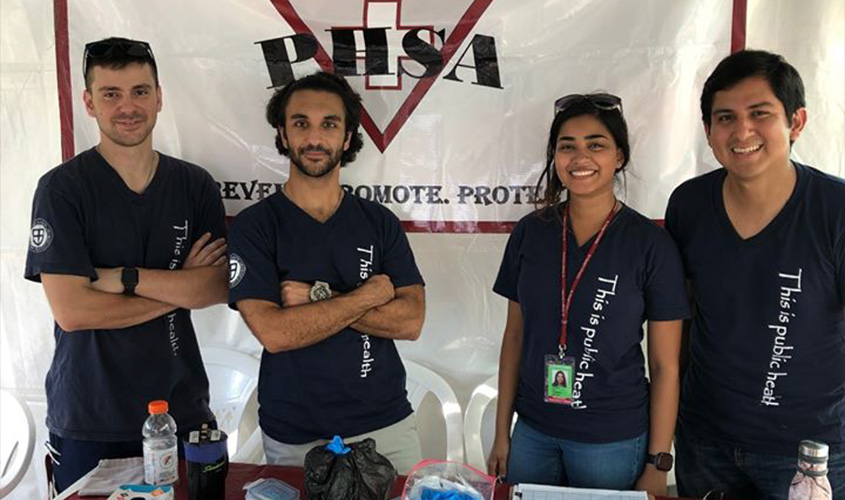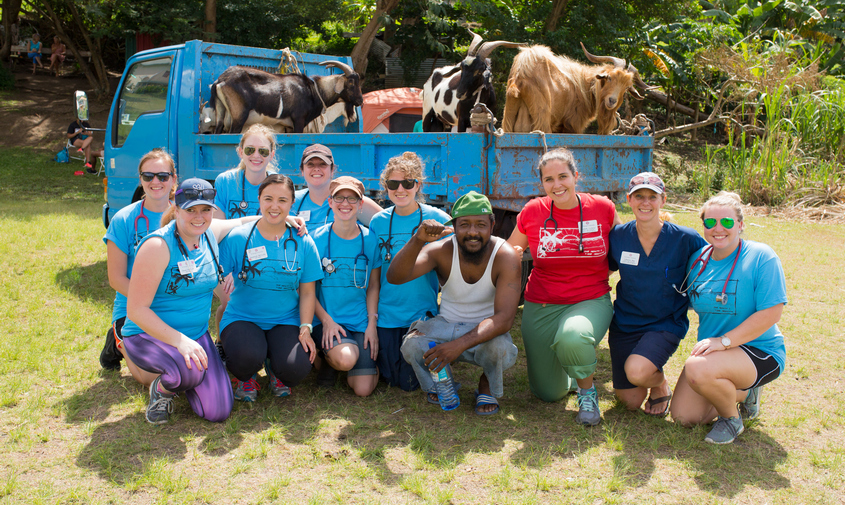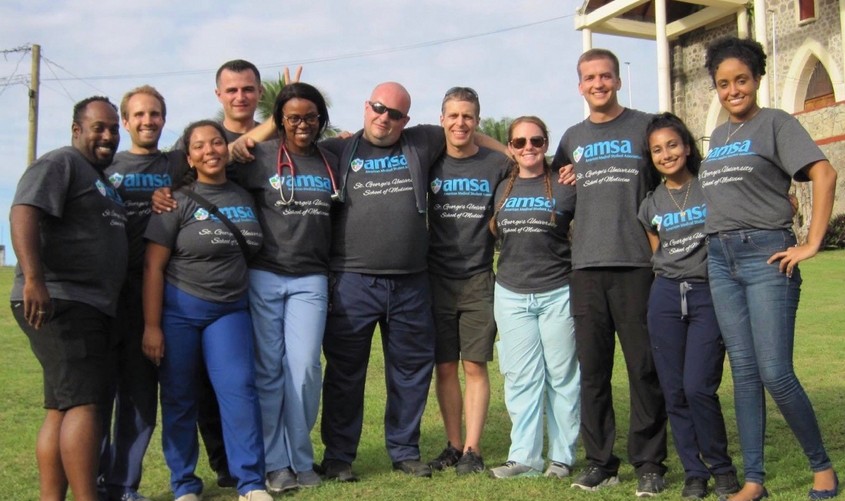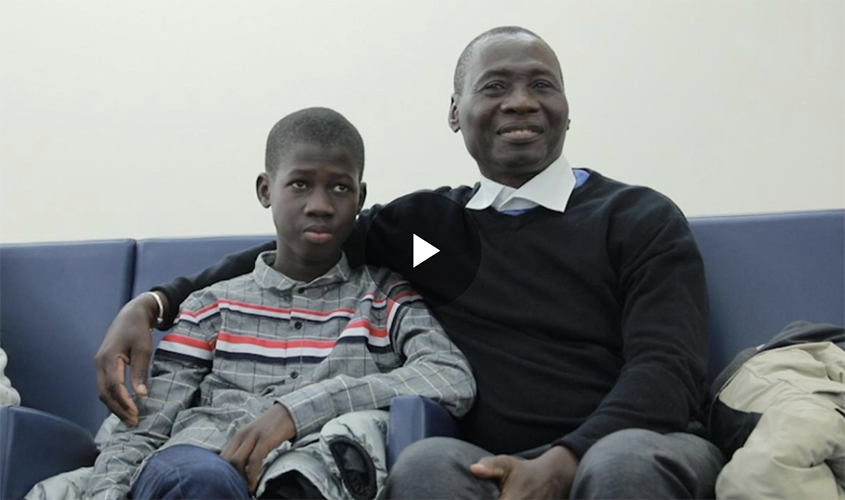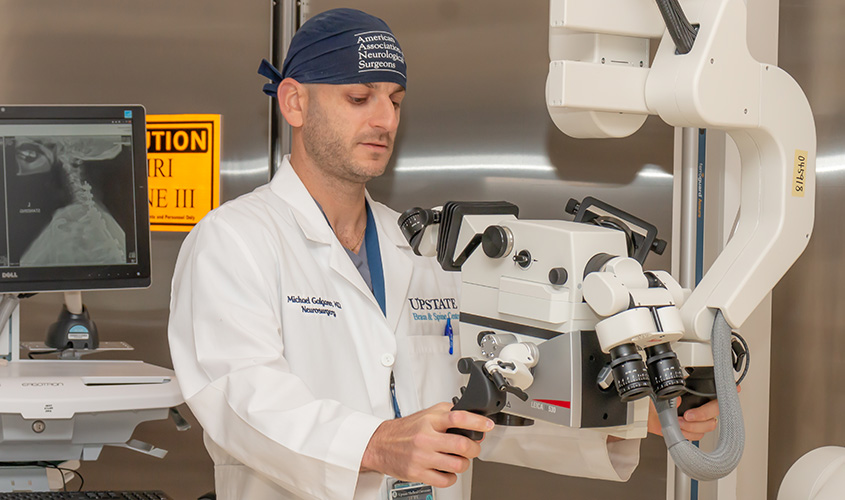PhD grad: COVID-19 spread resembles prior dengue pandemics
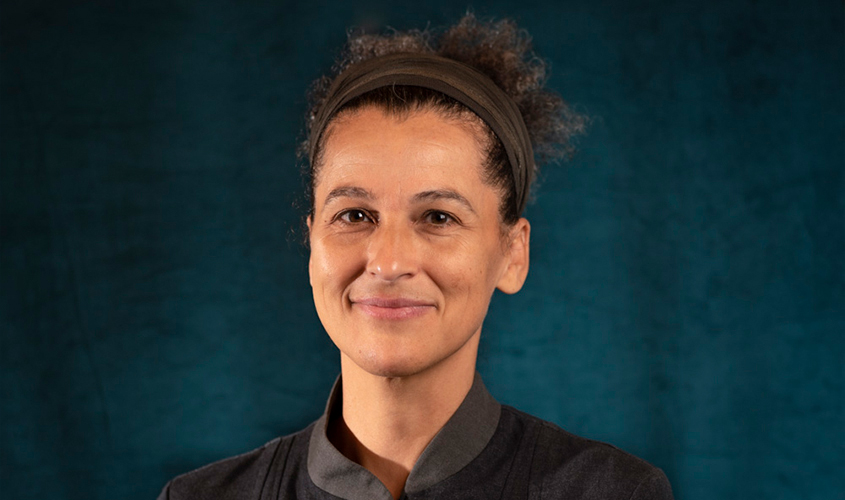
The daughter of a Grenadian, Karin Schiøler, PhD ’06, frequented the Spice Isle as a child, visiting her Grandfather and family in La Digue, St. Andrew’s. Yet there was a period of 18 years where her life and studies brought her elsewhere. She didn’t return until the early 2000s when, while living in Martinique, she first realized that a curious mosquito-borne disease was posing a serious public health threat to the Caribbean and other tropical regions.
Dr. Schiøler seized the opportunity to undertake a research project on dengue in Grenada and simultaneously earned her PhD from St. George’s University, the second such degree to be awarded by SGU’s School of Graduate Studies. She has gone on to study mosquito-borne diseases primarily in Sub-Saharan Africa, and is currently an associate professor in the Global Health section at the University of Copenhagen in Denmark.
SGU News reached out to Dr. Schiøler to learn more about the research she has done, specifically on dengue, and how it applies to the current healthcare situation surrounding coronavirus (COVID-19).
St. George’s University: According to the CDC, up to 400 million people worldwide get infected with dengue each year. Why is the disease such a challenge to control?
Dr. Schiøler: The disease is difficult to control because it is transmitted by a mosquito that is extremely well adapted to the domestic environment of most tropical areas. In other words, it lives in and around our houses. We provide the water containers for its larvae and the blood for its egg production—a rather smart setup, at least for the mosquito. Eliminating the mosquito in an environmentally safe way has proven very difficult. At the same time, vaccine development has taken decades, and although a dengue vaccine was recently marketed in some countries, its wider use is limited as it is deemed safe only for those who have already had dengue at least once.
SGU: What parallels can you draw between dengue and what’s taking place with COVID-19?
Dr. Schiøler: Dengue epidemics are acute in the sense that they erupt more or less unexpectedly, rage through the population and then disappear again after weeks or months. The real problem is not as much the experience of the disease, but when all of a sudden a large proportion of the society has it and are home sick or hospitalized, then you have to worry not just for the individual but for society at large in terms of social and economic consequences. What we are currently experiencing with COVID-19 at a global level, many countries have experienced previously due to dengue. That is a healthcare system under siege and the disease taking hold of the entire society, often triggering a health emergency or even a state of emergency declaration.
About a third of those who are infected by dengue virus experience symptoms, and a fraction of those people die from dengue. In between, dengue may cause a range of different symptoms and severities, just like COVID-19. So another parallel that can be drawn is that of human behavior—risk understanding and risk perceptions. How do people perceive COVID-19 and the risk of infection, and how does that affect their behavior? How much can you control this behavior if people don’t feel at risk? In a way, I think COVID was due to happen one way or the other. It’s a large-scale version of what we see with national or regional epidemics, like dengue, where efforts to control the disease by targeting the mosquito often falls short as risk perception is relatively low among homeowners compared to the efforts required to keep the mosquito out of our houses and lives.
“What we are currently experiencing with COVID-19 at a global level, many countries have experienced previously due to dengue.”
SGU: How have you addressed the persistence and spread of dengue?
Dr. Schiøler: My colleagues and I focus on understanding the dengue mosquito and its habitat, from the household to a wider community level including institutions and specific commercial settings. I believe that this understanding remains the key to dengue control. One of the projects that I’m directly involved with in Zanzibar, Tanzania, is an effort to integrate dengue control into primary school curriculum so that children can learn and execute mosquito control adapted to the realities of their household and wider community. It’s a mixed-methods study where we aim to determine how the children perceive dengue and other mosquito-borne diseases, what they can and can’t do as children in terms of control activities, and what’s actually accepted in that particular society. In another study, also on Zanzibar, we are working in collaboration with the tourism sector to replace the heavy reliance on chemical insecticides with environmentally sustainable mosquito control measures at hotels.
SGU: How would you describe your experience studying dengue in the Caribbean?
Dr. Schiøler: My thesis focused around understanding who the main risk groups are when an arbovirus like dengue is transmitted in the population. I studied how it spread and how a local active surveillance system worked to address it. In collaboration with both public and private health care providers, I actively went out and pursued cases and set up a system with rapid diagnostic turnover and response to the health authorities. The aim was to predict outbreaks by picking up on the early cases, and then activate vector control and public dissemination before epidemic onset. My study showed that, after diagnosing the index case, there was a seven to eight week lull before a full-blown epidemic. We learned how to react to the risk of a new virus and how it is likely to spread through a small-island population. This experience was groundbreaking for me in that it gave me the first experience of working across disciplines and with different institutions and actors from the nurses and doctors forming the frontline of Grenada’s health care system and officials at the Grenada Ministry of Health to researchers at the CDC in Puerto Rico, who helped me set up advanced diagnostic techniques in Grenada.
SGU: What led you down the path to becoming an infectious disease researcher?
Dr. Schiøler: For me, research has always been about curiosity. Why is dengue even a public health problem? Why has nobody solved this problem already? Of course, the reason is that dengue is a complex disease—it’s not that easy to solve. You may get a few answers to the problem, but that will create new questions, and you keep seeking new answers for these questions. It’s perhaps frustrating at times, yet very rewarding. I started out fairly narrowly in terms of an immunological interest in dengue symptoms, but that interest lead me in into new directions, where today my primary focus is more on the entomological aspects of disease transmission and the inclusion of the community and other stakeholders in finding sustainable solutions to mosquito control. It’s the prospect of change that makes it exciting, and the realization that there isn’t necessarily a simple biomedical answer to diseases such as dengue. One can argue the same in the case of COVID-19.
– Brett Mauser
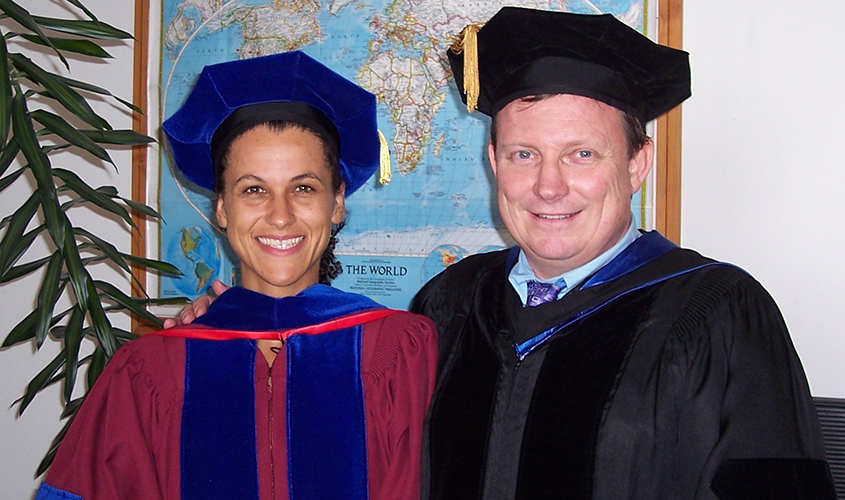
SGU graduate Karin Schiøler, PhD, with Dean of Graduate Studies Dr. Calum Macpherson.
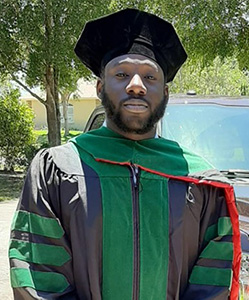
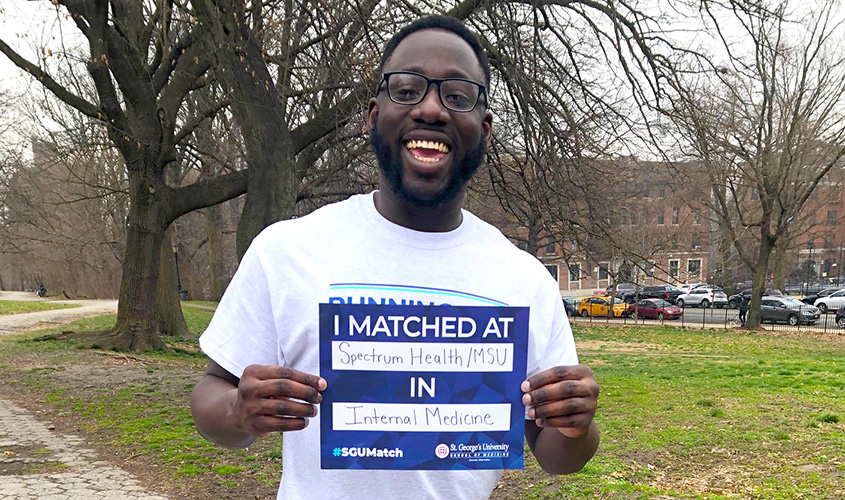
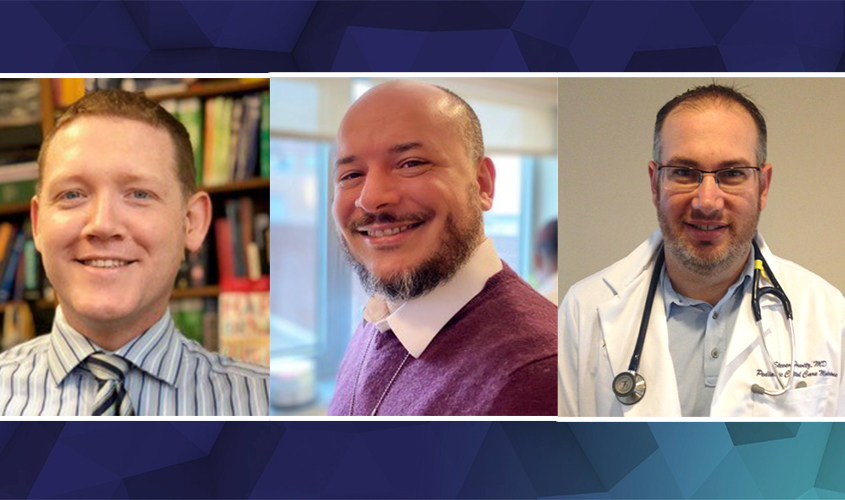
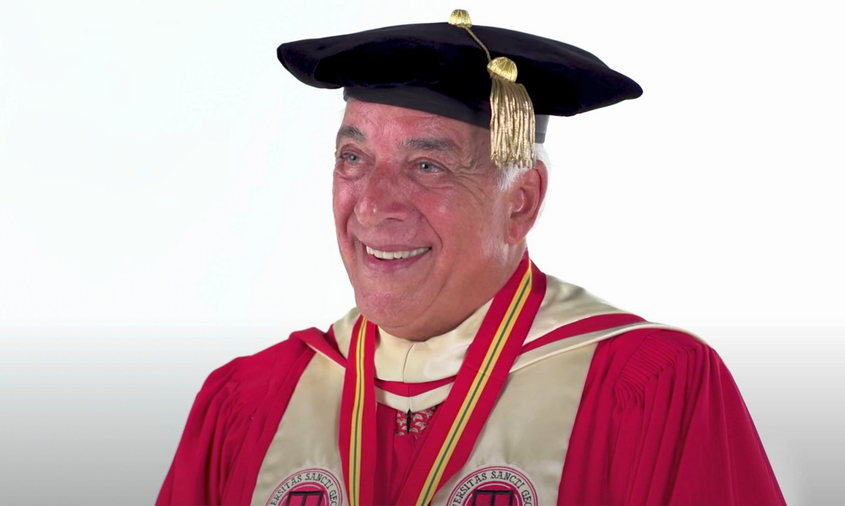
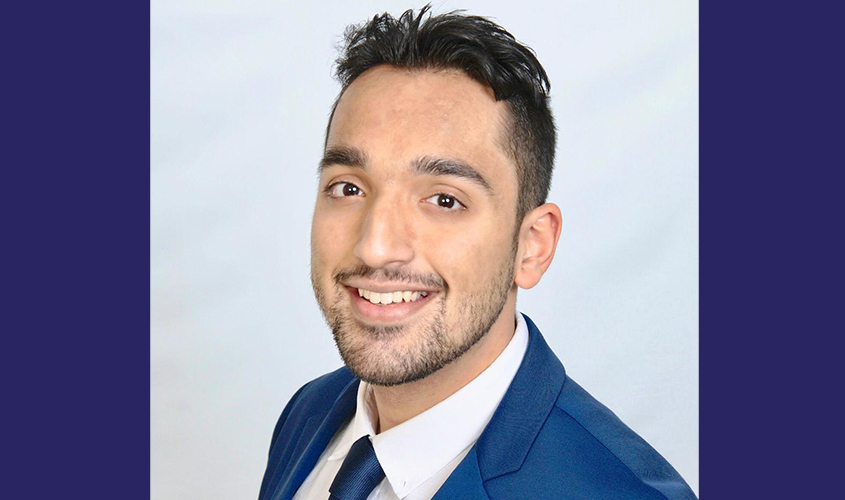
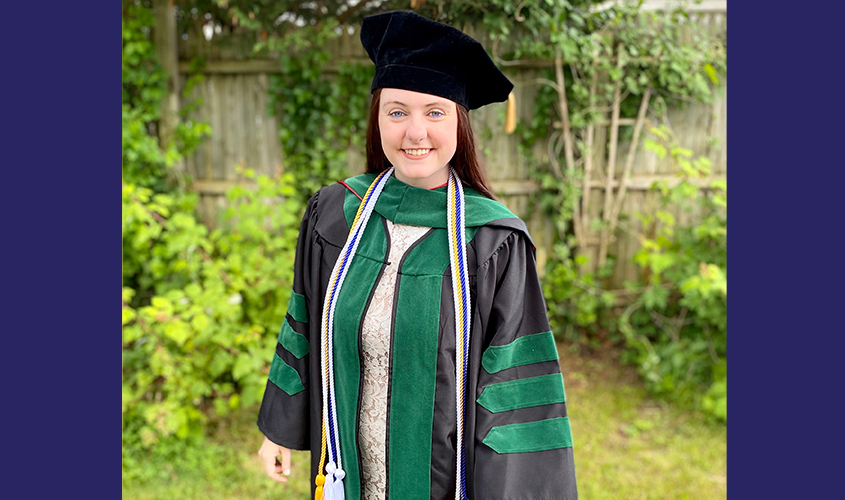

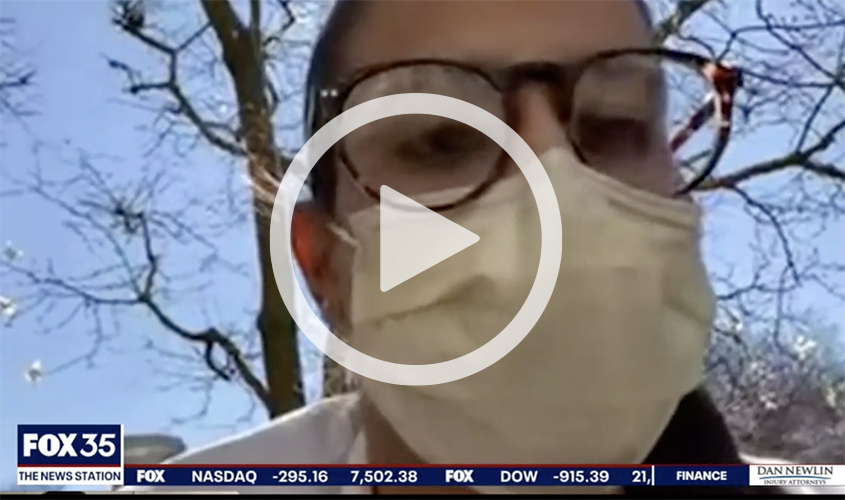
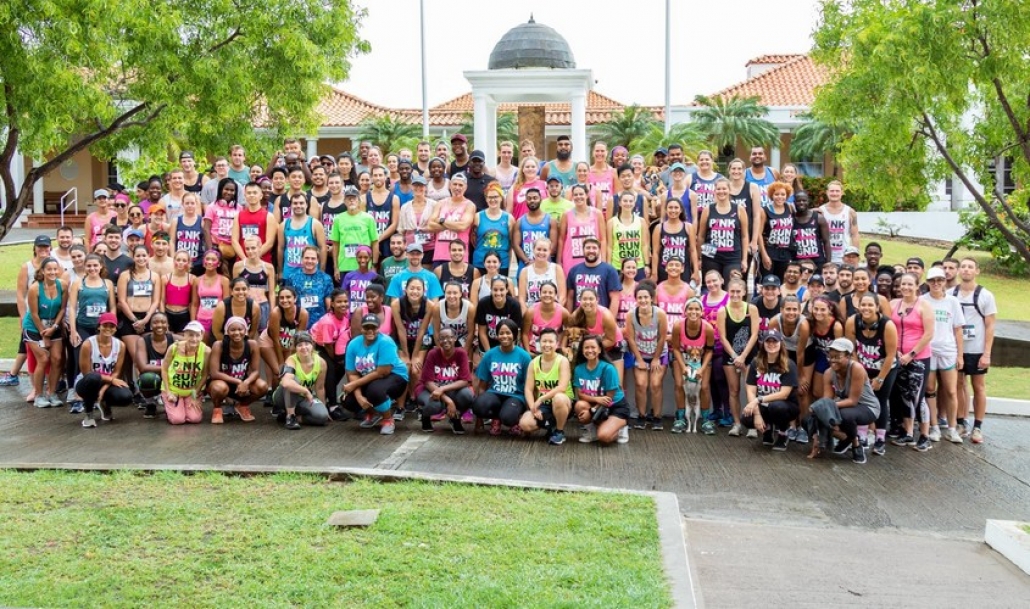 Since St. George’s University opened more than 40 years ago, Grenada has been a second home for SGU students who have descended upon the True Blue peninsula from countries all over the world. Collectively, through the more than 60
Since St. George’s University opened more than 40 years ago, Grenada has been a second home for SGU students who have descended upon the True Blue peninsula from countries all over the world. Collectively, through the more than 60 